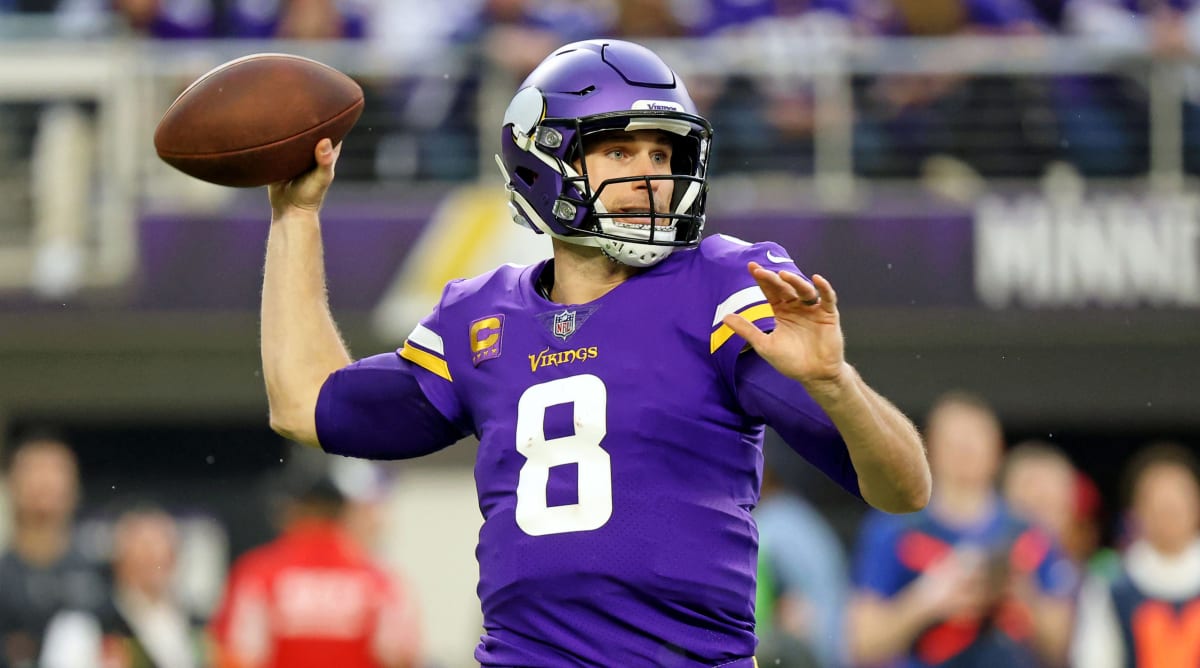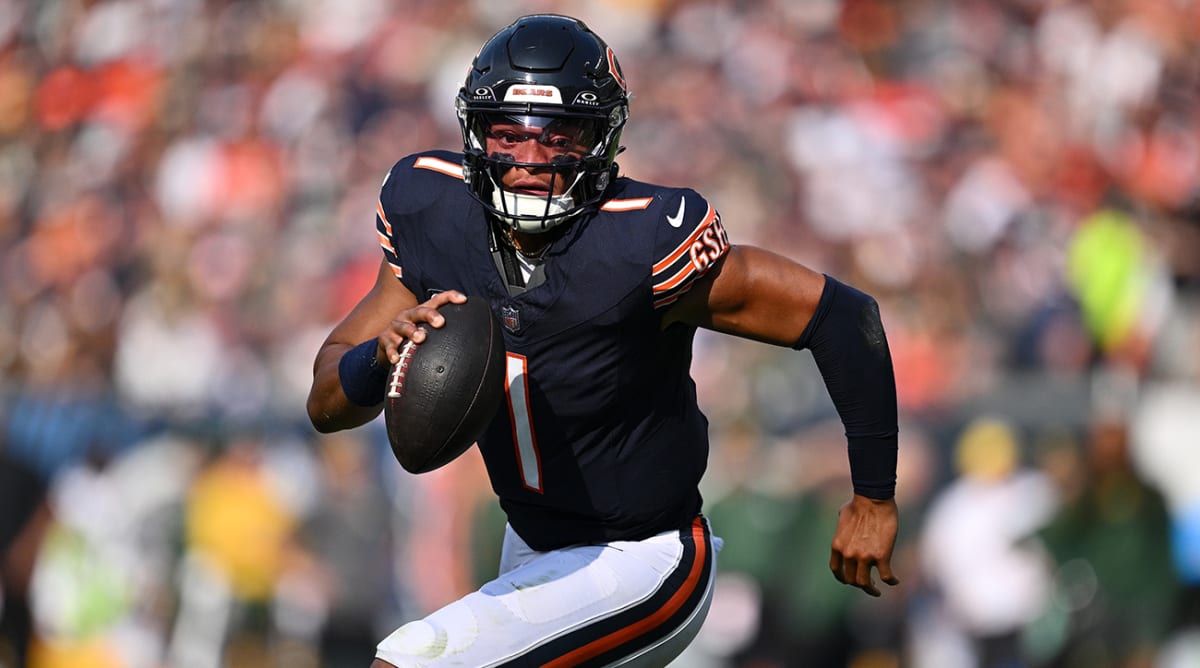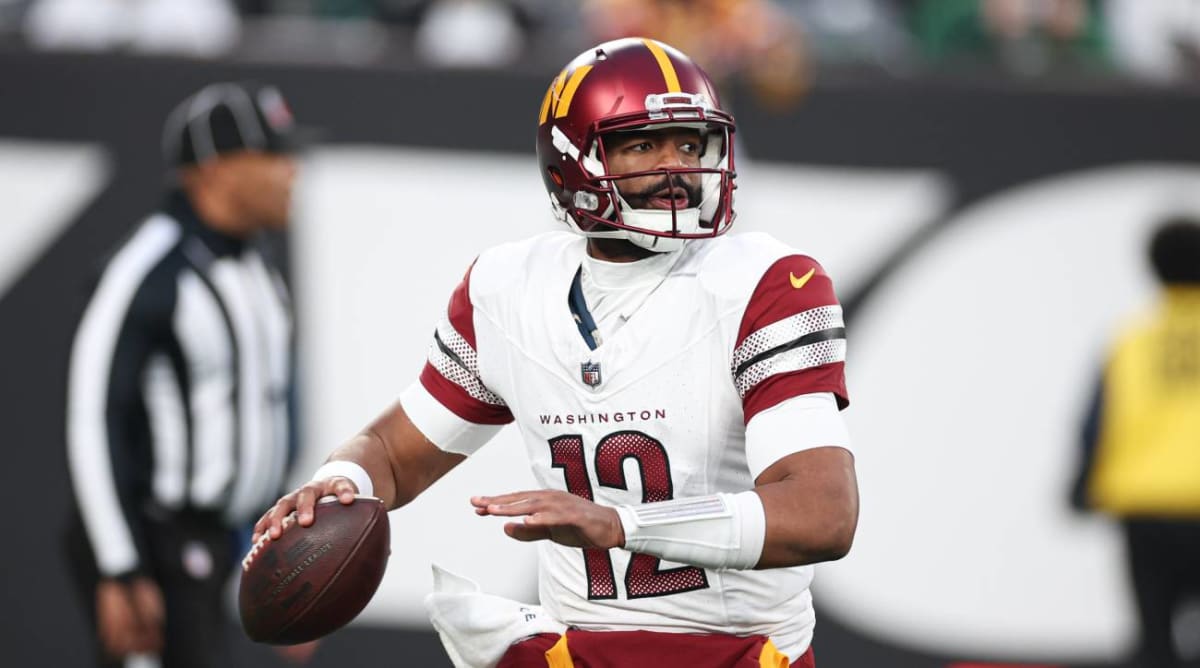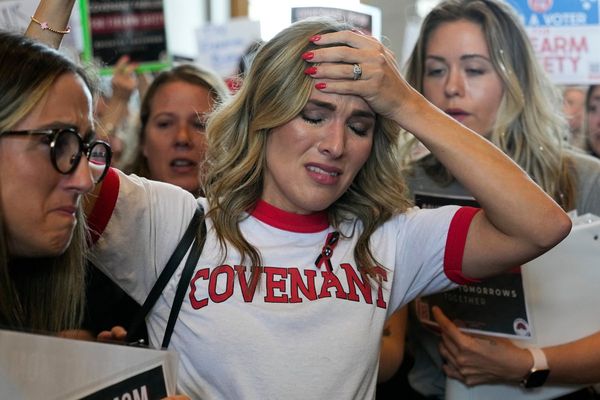Time to dive in, and recap a few items on the first couple of days of free agency …
• It is a little ridiculous to think Kirk Cousins just fell into the money he’s made. But I know that sentiment is out there, so I figured, in the wake of the ex-Viking procuring a four-year, $180 million deal in Atlanta, this would be a good time to kill that narrative.
Cousins’s earning power isn’t a result of luck. Rather, it’s the result of him betting on himself.
In 2015, when Cousins first became Washington’s starter, the team offered him a middling deal to stick around long-term. Cousins turned it down, then turned down a similar offer after the team franchised him in March of ’16. So he played on the $19.953 million tender, and another tag at 120% of that ($23.951 million) in ’17, when the team again fell short of what the franchise tenders dictated he make in guaranteed money.

Matt Krohn/USA TODAY Sports
Gutsy moves by Cousins, who incurred 32 games of injury risk (and really 48, if you count 2015), and the risk that his play would go the wrong way. In doing the deals, Cousins pushed things to a point where the tag, at 144% of the 2017 number, wasn’t palatable anymore for the team, which allowed for him to enter the market, and have the New York Jets and Minnesota Vikings bid on him.
[ 2024 NFL Free Agency: Latest News & Analysis ]
From there, the three-year, $84 million fully guaranteed deal by Minnesota, because of its structure and length, set the stage for another three-year deal essentially fully guaranteed, the second of which had a big back end cap number that, again, took the tag off the table as an option for the Vikings as they headed into this offseason.
Anyway, that’s a lot of financial jargon for you. Just know this—Cousins getting here didn’t come without risk. He should be applauded for taking it.
• The Carolina Panthers’ move to trade Brian Burns to the New York Giants for the 39th and 140th picks in the NFL draft on Monday, a year-and-a-half after turning down a blockbuster offer from the Rams, definitely merits further investigation—because it sure looks like Carolina mismanaged this one from the start. But maybe not for the reason you think.
That Carolina came in so low with its initial offers to Burns two years ago had a chilling impact on the negotiation that never really went away. In fact, while it wasn’t quite the five-year, $141 million deal (with $76 million guaranteed) that Burns took from the Giants, the last offer Carolina made, just before the 2023 opener, was markedly up from where the team had been. The trouble was, at that point, Burns wasn’t going to compromise and pass on hitting the market seven months later at 25 years old.
Clearly, Burns didn’t feel properly valued. The Rams’ offer only justified that feeling. That proposal came as an offshoot of the teams’ trade talks on Christian McCaffrey, with Rams GM Les Snead putting a 2023 third-round pick, and first-round picks in ’24 and ’25 on the table. The Panthers said no, which illustrated the dysfunction in David Tepper’s organization, where an unwillingness to part with a top-shelf pass rusher was crossed with the team’s reluctance to let such an asset go for a massive return.
So all of that history, plus Tepper’s own feelings about the situation, is what new GM Dan Morgan (who was there for all of this as assistant GM) and EVP of football operations Brandt Tilis were wading through in trying to recoup as much they could for Burns. And because Burns didn’t have a year-and-a-half left on his rookie deal, his trade value wasn’t close to the same as it had been in October 2022.
Now, if I were the Panthers, I’d have just given Burns the deal the Giants did, for sure, rather than taking the second- and fifth-rounders in return. But this, again, is where you’d look at the situation and say that maybe everyone needs a fresh start.
In this case, it sure looks like proof that the folks in Charlotte have to hope Morgan, Tilis, Dave Canales, and most of all, Tepper himself, will give the Panthers one of those.
• The Russell Wilson signing in Pittsburgh happened, well, on the Steelers’ terms.
My understanding is the team was very clear with the 35-year-old nine-time Pro Bowler during their meeting Friday. Wilson was going to have to earn everything, including beating out former first-rounder Kenny Pickett for the starting job. There’d be no assurances past 2024—Wilson’s camp had fished around for offers that would give him some guarantees in 2025. But Wilson left there Friday to regroup and make a decision Saturday.
That he chose to go to Pittsburgh without anything built into the second year, which would’ve been a way for him to get some additional financial benefit beyond the $39 million the Broncos were going to owe him (minus the $1.21 million minimum that Pittsburgh’s going to give them) regardless for 2024, shows how much he wanted to be there.
And for the Steelers, this is ideal, too. If Pickett was still a rookie, and you were looking to build a nurturing quarterback room, I don’t think the Steelers do this. Now, with Pickett going into Year 3, the gloves are off. Pittsburgh has to find out, one way or the other, whether Pickett has it, and signing Wilson puts them in position to do that.
Either Pickett takes on the challenge, and ascends, or Wilson beats him out, giving them their answer on the 2022 first-round pick. Or, they have an experienced starter to guide their playoff-quality roster, which gives them time to reassess in 2025. Neither outcome seems like a bad result.

Jamie Sabau/USA TODAY Sports
• We told you last week that the Bears felt compelled to slow down the timeline on trading Justin Fields, and it really was because of the market. Teams were waiting on Cousins and Baker Mayfield. They were able to get to Wilson earlier than anticipated (with the Broncos’ permission for Wilson to visit teams).
Things haven’t gone great for Chicago, with Cousins landing in Atlanta and Wilson signing with Pittsburgh. With those two open chairs gone, the teams interested in Fields being their starting quarterback, or competing to be their starter, dwindled.
What now? Well, let’s start with the compensation. If Fields isn’t going to start in 2024, and with his contract carrying a $25.3 million option for ’25, then you probably aren’t giving up a top-100 pick for him. Now, if the offer is a fourth- or fifth-rounder from, say, the Philadelphia Eagles to be a backup, is it better to trade Fields now, or to wait and see if someone offers more closer to the draft, or if someone becomes available over the summer?
To me, that depends on how Fields feels about it. It’d mean sitting down and having the hard conversation with the 2021 first-rounder on whether he’s comfortable being in a quarterback room with the presumed first pick, Caleb Williams, and being patient. And if you’re Fields, it’s a tough call—going for a fresh start elsewhere as a backup, or staying in Chicago.
So, yeah, it’s complicated.
• The running back market has been better than last year, but still is what it is. Saquon Barkley and Josh Jacobs came in at about $12 million per year, with Jacobs’s deal being year to year, as most Packer deals. Derrick Henry, D’Andre Swift and Tony Pollard were around $8 million per year. Obviously, those sets of contracts weren’t identical, but clearly there were two buckets the players fell into, and both had more money in them than the $6 million per year that Miles Sanders topped the market at in 2023.
Perspective’s important here. Hunter Renfrow and Courtland Sutton both make more than $15 million per year. There are 15 left tackles and 10 right tackles making more than any of those guys received in free agency.
Which is to say we’ve probably reached the point now where the market for the position has been pushed down so far that top-end tailbacks are actually a bargain.
• And maybe that explains why the Eagles are where they are. Long seen as a team with an aversion to investing in the position, either in the draft or free agency, Philly now is responsible for two of the three biggest running back contracts of the past decade—one for DeMarco Murray and now the one for Barkley. And you can say that Murray was a Chip Kelly move, and that’s correct, but Murray was simply replacing another massive running back contract on the roster belonging to LeSean McCoy.
I’d actually say this is a credit to Philly, too. Teams should never operate in absolutes, or think they have it all figured out, and this would be an example of a front office staying loose with its rules, and finding good opportunities as a result.
Maybe Fields will be the next of those opportunities.
• The guard market exploded Monday. Robert Hunt got $20 million per year from Carolina. Jonah Jackson and Kevin Dotson combined for deals that add up to a $33 million average per year with the Rams. And Mike Onwenu scored $19 million per year.
We wrote about it in the Monday takeaways, and I think it stands now—there are two reasons why things went down like this.
One, because of the way the tag system works, with all offensive linemen grouped together. Teams, generally, are unwilling to pay that number for the position, so better guards make it to the market than players at other positions.
Two, there simply aren’t enough good big men to go around, as evidenced by the number of teams that’ve had o-line injuries that have crashed their seasons of late.
So, good for Hunt, Dotson, Onwenu and Jackson.
• The Rams’ expenditures at guard also are a good sign of the shifting philosophy, and even Patriots’ influence, that Sean McVay has applied to his offense over the past year, with the additions of Nick Caley and Ryan Wendell (and this year, Jerry Schuplinski) to his coaching staff.
Last year, McVay’s staff worked to build a more versatile run game that went beyond the Alex Gibbs-inspired zone ground attack that the head coach was raised on. It worked, as Kyren Williams (1,114 yards, 12 TDs, 5.0 yards per carry) would tell you. And so to build on that, the Rams are doubling down on the more physical, people-moving linemen that drive the gap-scheme runs they’ve adopted, in paying Dotson and adding Jackson from Detroit.
It also, of course, doesn’t hurt that Dotson and Jackson will help keep interior rushers out of Matthew Stafford’s lap, and keep his passing lanes clean.

Vincent Carchietta/USA TODAY
• Yesterday, in the wake of the Patriots signing a one-year, $8 million deal with Jacoby Brissett, I tweeted out a story I did on the quarterback after his final start as a Brown, and as he navigated an awkward handoff back to Deshaun Watson, who was coming off an 11-game suspension.
I fielded this response this morning from a coach who worked with him in Washington.
“Saw your article on Jacoby—one of the best dudes I’ve been around,” he texted. “Ryan Fitzpatrick level of ‘glue guy’. Couldn’t find one guy that didn’t love him.”
Which is exactly what you’d want in the quarterback room if you’re looking to take one, I don’t know, let’s say with the third pick.
• I’m not saying it’s likely, but based on the way he flashed in limited action last year in San Francisco, where he’s going, and who he’s playing for, I think the idea that Sam Darnold could be this year’s version of Baker Mayfield isn’t out of line. Darnold, by the way, is a year younger now, at 26, than Mayfield was a year ago when he signed in Tampa.







